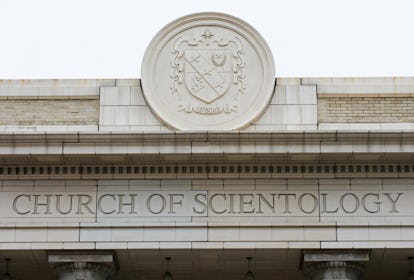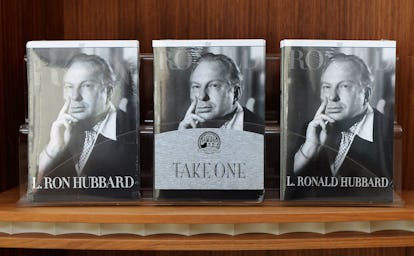When Did David Miscavige Become The Leader Of Scientology? Tracing His Ascent
David Miscavige is arguably one of the most recognized, and at times, controversial religious figures in the world today. As the leader of the Church of Scientology, his name is synonymous with the organization, much like its founder, L. Ron Hubbard, before him. For many, the question of when and how Miscavige ascended to this powerful position remains a point of curiosity. His journey to the helm was not an overnight event but a gradual consolidation of power and influence that began long before the passing of Scientology's founder.
This article delves into the timeline of David Miscavige's rise, from his early days within the Church to his current role as its ecclesiastical leader, drawing upon various accounts and official Church statements.
Early Life and Entry into Scientology
Born on April 30, 1960, in Pennsylvania, David Miscavige's connection to Scientology began at a young age. His family joined the Church of Scientology in 1971, and in the early 1970s, they even relocated from their home in Willingboro, N.J., to Scientology headquarters in East Grinstead, England, for a year to further their training. This early immersion laid the groundwork for his future within the organization.
A Young Disciple's Path
Miscavige quickly distinguished himself within the Church. By the remarkably young age of 12, he became the youngest professional auditor for the organization, a significant achievement within Scientology's hierarchy. His dedication and aptitude were evident, leading him to take on increasingly responsible roles. He became a cameraman on L. Ron Hubbard's crew, providing him with direct access and exposure to the founder's operations and inner circle. This close proximity to Hubbard was crucial, as Hubbard reportedly viewed David Miscavige as one of his closest and most trusted aides, essentially grooming him to become the leader of the Church.
The Shifting Landscape: Hubbard's Seclusion and Miscavige's Rising Influence
The early 1980s marked a pivotal period for the Church of Scientology and for David Miscavige's trajectory. L. Ron Hubbard, the charismatic founder, began to withdraw from public life. He stopped appearing at public events of the church in 1980 and went into seclusion. This created a power vacuum and a need for strong leadership to manage the organization's affairs, particularly amidst growing legal challenges.
The De Facto Leader Emerges (Early 1980s)
During Hubbard's seclusion, David Miscavige seized the opportunity to consolidate power. As Hubbard stepped back, David became the de facto leader of the organization. In 1981, he was given the significant responsibility to handle legal claims against Hubbard, a task that further cemented his authority and demonstrated his ability to manage critical church operations. He continued to consolidate power, and some accounts suggest he "muscled others out" during this period, indicating a strategic and assertive approach to securing his position. He steadily rose through the ranks, becoming Hubbard's most trusted advisor and, by the early 1980s, had firmly established himself in a leadership role.
This period was characterized by Miscavige taking on more and more direct management responsibilities, effectively steering the Church in Hubbard's absence. His early achievements became widely known within the organization, solidifying his reputation as a capable and determined leader.
The Transition of Power: From Hubbard's Passing to Official Leadership
The formal transition of power occurred in the wake of L. Ron Hubbard's death, which was announced in 1986. This event marked a definitive turning point for the Church of Scientology and for David Miscavige's role within it.
Announcing a New Era (1986-1987)
Following Scientology Founder L. Ron Hubbard’s passing in 1986, it was David Miscavige who announced the founder's death. This act alone underscored his prominence and authority within the Church. Having been Hubbard's trusted advisor and the effective leader during Hubbard's seclusion, Miscavige then formally assumed the role of Scientology's leader. He took the helm after the death of the organization's founder, L. Ron Hubbard, in 1986.
The official title came shortly thereafter. In 1987, the year after Hubbard's death, David Miscavige was named "Chairman of the Board" of the Religious Technology Center (RTC). The Religious Technology Center is a corporation that owns the copyrights to all Scientology scriptures and technologies. As Chairman of the Board of RTC, Mr. Miscavige bears the ultimate responsibility for ensuring the standard and pure application of Scientology, making him the highest ecclesiastical authority within the religion. Official Church of Scientology biographies consistently describe Miscavige as "the ecclesiastical leader of the Scientology religion." He is recognized as the current leader of the Church of Scientology and its second leader overall, following L. Ron Hubbard.
David Miscavige's Leadership: Decades at the Helm
Since officially taking the leadership in 1987, David Miscavige has been at the helm of the Church of Scientology for more than three decades. His tenure has been marked by significant developments, both in terms of the religion's expansion and the scrutiny it has faced.
Guiding Scientology Through Growth and Challenges
As the ecclesiastical leader, Miscavige has spearheaded what the Church describes as "the most dramatic period of growth in the young religion’s history." He is credited with steering the religion through many challenging times and securing its survival, notably by obtaining full religious recognition in various countries. Under his leadership, the Church has embarked on a worldwide expansion program, including the grand opening of numerous "Ideal Churches of Scientology" across the globe, such as the Ideal Church of Scientology of Los Angeles on April 24, 2010, and new churches in South Africa.
His position as Chairman of the Board Religious Technology Center (RTC) means he bears the ultimate responsibility for protecting, preserving, and expanding Scientology worldwide, ensuring the purity and standard application of L. Ron Hubbard's teachings. He has become a familiar leader, and his early achievements, which propelled him to power, have become widely known within the organization.
The Public Eye: Scrutiny and Controversy
Despite his official role and the Church's narrative of growth, David Miscavige's leadership has been consistently met with intense public scrutiny and controversy. As the leader of the Church of Scientology, he has become a central figure in investigations of the faith, which was further delved into by documentaries like HBO's "Going Clear: Scientology and the Prison of Belief."
A Figure Under Constant Examination
Allegations from former top church officials have come forward to describe a culture of violence and abuse within the organization under his leadership. His estranged father, Ronald Miscavige, published a memoir titled "Ruthless: Scientology, My Son," which brought renewed scrutiny to David Miscavige and the Church. This book and the accompanying interviews, such as the one on ABC News' 20/20 in April 2016, painted a critical picture of the Scientology leader.
Another significant point of controversy has been the disappearance of his wife, Shelly Miscavige, from public view in 2007. Those who asked questions about her whereabouts were reportedly stonewalled or worse. Prominent former Scientologist and outspoken critic Leah Remini has also frequently raised concerns about Miscavige and the Church, including allegations that Miscavige's lawyers claimed he "can't be found" in certain legal contexts, though this refers to a specific legal tactic rather than literal disappearance.
Miscavige's close friendship with high-profile Scientologist Tom Cruise is also often highlighted in media reports, further placing him in the public spotlight.
Conclusion
David Miscavige's ascent to the leadership of the Church of Scientology was a multi-stage process, beginning with his deep involvement from a young age and his cultivation as a trusted aide to L. Ron Hubbard. He emerged as the de facto leader in the early 1980s during Hubbard's seclusion, consolidating power and managing critical Church affairs. The formal transition occurred in 1987, the year after L. Ron Hubbard's death in 1986, when Miscavige was officially named "Chairman of the Board" of the Religious Technology Center, cementing his position as the ecclesiastical leader.
For over three decades, Miscavige has guided the Church of Scientology, overseeing its expansion and global recognition, while simultaneously navigating significant public scrutiny and controversy. His journey from a young auditor to the undisputed leader of a global religion is a complex narrative central to understanding the modern Church of Scientology.

How Did David Miscavige Become Leader Of The Church Of Scientology?

How Did David Miscavige Become Leader Of The Church Of Scientology?

How Scientology leader David Miscavige rose to power - Business Insider